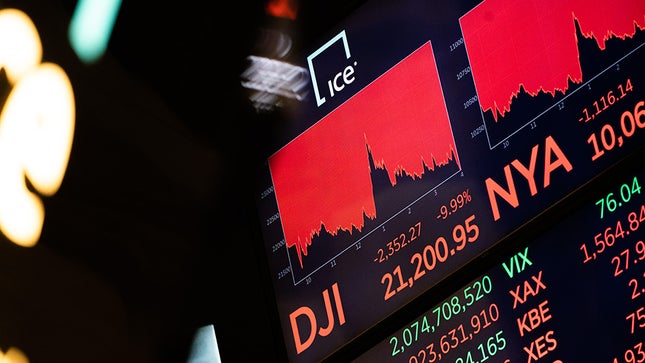Will the US Economy Shrink in 2020?
- Posted on March 19, 2020
- Stock Market
- By Glory

Analysts have predicted that there are high tendencies of the US economy shrinking by 13 to 14 percent. On Wednesday, JP Morgan and Co. released a new note stating that there is a high probability of the US economy shrinking by 14 percent in the second quarter of 2020. This prediction was further buttressed when Bruce Kasman, chief economist of JP Morgan said that the US and world’s economy are in for a slow growth period. “There is no longer doubt that the longest global expansion on record will end this quarter,” He said.
The first recipient of the slow economic growth would be China, considering that the coronavirus pandemic originated from there and the Chinese market being the second-largest market in the world has been hit hard. Kasman predicts that China’s GDP growth would decline -40% in the first quarter. The second on the list of economic decline would be the US and Euro areas as they may end the first quarter with a growth decline of 4% and 15%, respectively.
Regarding the second quarter, Kasman expects a “collapse” and “drag down” of the rest of the world together with China, the US, and Europe. In the second quarter, the US growth will decline to 14% while the Euro area will drop 22%. “These outcomes are worse than were recorded during the global financial crisis or the European sovereign crisis.” Goldman Sachs also predicts a shrinkage of the US economy by 5% in the second quarter. There is an expectation of the US economy to sharply contract between late March and April. If this short downturn happens, a recession will be officially declared. In a Sunday note, the firm’s economists predicted that the US economy will shrink 5% in the second quarter after zero gross domestic product growth.
However, there is a possibility of China’s GDP growth bouncing back by more than 57% in the second quarter of 2020. Strong gains would also follow in the third and fourth quarters of 2020; thereby, causing the Chinese economy to expand by 5.1% at the end of the year.
Kasman is also expectant that the unemployment rate would increase to 6.25% at the peak of the crisis until it eventually drops to 5.25% before the year ends. All predicted losses are most likely to occur between March and April; once that’s over, the foundation for a strong recovery will be in place.
“If a normalization in the activity from depressed levels takes hold midyear alongside building policy stimulus, the depth of the current downturn can be seen as a springboard for a strong snapback in growth,” Kasman added.
Hopefully, the pandemic threats seize in due time and businesses return to regular operations. If otherwise is the case and the global economy makes no progress longer than what Kasman expects then there would be significant risks associated with the second half of the year. This would greatly affect overleveraged businesses and many of them will not outlast the pandemic.


Be the first to comment!
You must login to comment